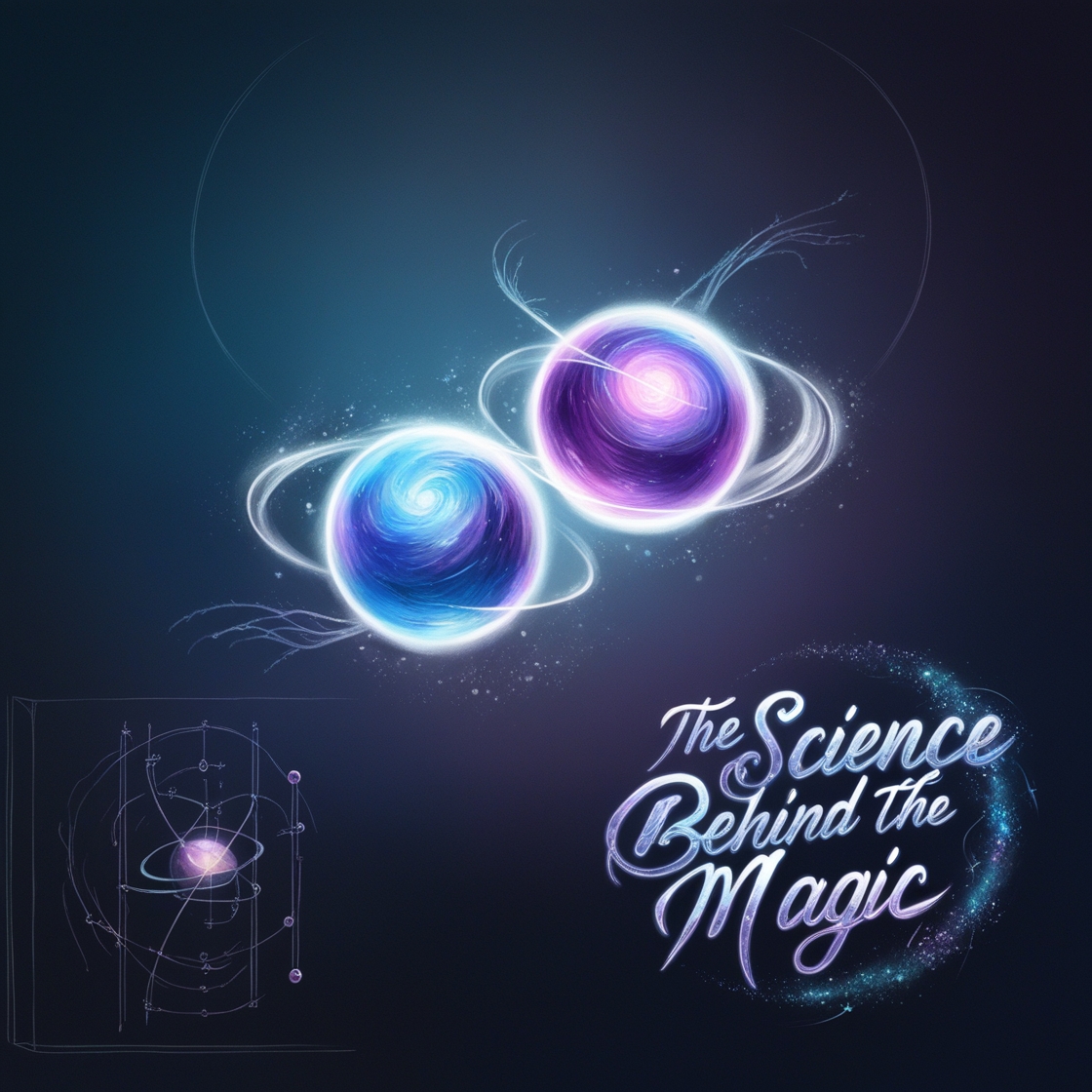Introduction
Quantum entanglement sounds like something straight out of a sci-fi movie, doesn’t it? But in reality, it’s a fascinating concept in quantum physics that challenges our understanding of reality. Imagine two particles that, despite being separated by vast distances, can instantaneously affect each other’s states. Sounds like magic? Let’s dive into the science behind this captivating phenomenon!
The Basics of Quantum Mechanics
Before we explore entanglement, we need to lay some groundwork about quantum mechanics itself. At its core, quantum mechanics is the branch of physics that deals with the behavior of very small particles—like electrons and photons.
Key Principles of Quantum Mechanics
One of the key principles is superposition, which means a particle can exist in multiple states at once until it is measured. Think of it like flipping a coin; until you look, it’s both heads and tails.
Particles and Their Properties
Particles have unique properties, like position, momentum, and spin, which can be altered by external forces. Understanding these basics is crucial for grasping how entanglement works.
Understanding Entanglement
Definition and Explanation
So, what exactly is quantum entanglement? It occurs when pairs of particles become interconnected in such a way that the state of one particle instantly influences the state of the other, no matter how far apart they are.
How Entangled Particles Work
Imagine you have a pair of gloves: if you have one glove, you instantly know the type of the other glove. Similarly, if two particles are entangled, knowing the state of one particle allows you to know the state of the other.
Historical Background
Early Theories and Discoveries
The concept of entanglement was introduced by physicists like Niels Bohr and Albert Einstein. They debated its implications and feasibility, sparking discussions that continue today.
Einstein, Podolsky, and Rosen: The EPR Paradox
In 1935, Einstein, along with Podolsky and Rosen, published a paper that presented a thought experiment to demonstrate that quantum mechanics might not be a complete theory. They were skeptical of entanglement, dubbing it “spooky action at a distance.”
The Science of Entanglement
Quantum States and Superposition
When two particles become entangled, their quantum states are interlinked. This means their properties can no longer be described independently.
Measurement and Observation in Quantum Mechanics
The act of measurement in quantum mechanics collapses the superposition, determining the state of the particle. This collapse is instantaneous for entangled pairs, leading to fascinating implications.
Real-World Applications
Quantum entanglement isn’t just a theoretical concept; it has real-world applications!
Quantum Computing
In quantum computers, entangled particles can process information more efficiently than classical computers. This means potentially faster calculations and problem-solving capabilities.
Quantum Cryptography
Entanglement also plays a crucial role in quantum cryptography, ensuring secure communication. It uses the principles of entanglement to detect any eavesdropping attempts.
Quantum Teleportation
Believe it or not, quantum teleportation involves transmitting the state of a particle from one location to another without moving the particle itself, relying on entangled particles.
The Mysteries of Entanglement
Non-locality: Spooky Action at a Distance
One of the most puzzling aspects of entanglement is non-locality. When particles are entangled, changing the state of one can affect the other instantly, regardless of distance. This challenges our traditional notions of space and time.
Philosophical Implications of Entanglement
Entanglement also raises philosophical questions about reality and observation. Are our observations influencing reality, or is reality independent of our measurements?
Experimental Evidence
Key Experiments That Proved Entanglement
Several landmark experiments have demonstrated the reality of entanglement. Notable examples include the Aspect experiment in the 1980s, which supported the predictions of quantum mechanics.
Bell’s Theorem and Its Importance
John Bell formulated a theorem that established criteria for testing the nature of entangled particles. Experiments validating Bell’s inequalities have reinforced the reality of entanglement, countering local hidden variable theories.
Challenges and Controversies
Misconceptions About Entanglement
Many misconceptions about entanglement persist. For example, people often think entangled particles can communicate faster than light, which isn’t the case. They can influence each other, but they don’t send information.
The Debate Among Scientists
The interpretation of entanglement remains a topic of debate among scientists. Various theories propose different explanations, highlighting the complexity of quantum mechanics.
The Future of Quantum Entanglement
Upcoming Research and Innovations
Research in quantum entanglement is rapidly evolving. Scientists are exploring new ways to harness entanglement for technological advancements, pushing the boundaries of what we thought was possible.
The Role of Entanglement in Future Technologies
As quantum technologies develop, entanglement is expected to play a vital role in everything from secure communications to groundbreaking computing technologies.
Conclusion
Quantum entanglement is a stunning phenomenon that challenges our understanding of the universe. Its implications stretch beyond physics into technology, philosophy, and our comprehension of reality itself. While it may seem magical, it’s rooted in the solid foundations of quantum mechanics. As research progresses, who knows what other mysteries this enigma might unlock?
FAQs
What is quantum entanglement in simple terms?
Quantum entanglement is when two particles become linked in such a way that the state of one instantly influences the state of the other, regardless of distance.
Can entangled particles communicate with each other?
No, entangled particles cannot send information to each other faster than light; they merely influence each other’s states instantaneously.
How does quantum entanglement affect our daily lives?
While it might seem distant, entanglement has real-world applications in technologies like quantum computing and secure communications, which may soon affect everyday technology.
Is quantum entanglement real or just a theory?
Quantum entanglement is a well-supported phenomenon in quantum mechanics, demonstrated through numerous experiments.
What are the implications of quantum entanglement for technology?
Entanglement is poised to revolutionize fields like computing, cryptography, and even teleportation, enabling faster and more secure technologies.
